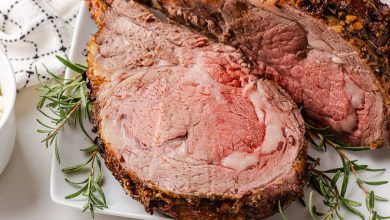Waxgourd (Chinese Preserving Melon) – Raw
Introduction:
The waxgourd, also known as Chinese preserving melon, is a versatile, mildly flavored vegetable commonly used in Asian cuisine. This refreshing, low-calorie vegetable is known for its delicate texture and subtle taste, making it a perfect addition to soups, stir-fries, and even pickled dishes. It’s a nutritious ingredient packed with fiber, vitamins, and minerals, which support overall health and well-being. Often enjoyed for its hydrating properties, waxgourd is a must-try for those seeking to diversify their culinary repertoire with light, healthy foods.
Ingredients Table:
| Nutrient | Amount per 100g |
|---|---|
| Energy | 13.0 kcal |
| Protein | 0.4 g |
| Total Fat | 0.2 g |
| Saturated Fat | 0.016 g |
| Carbohydrates | 3.0 g |
| Fiber | 2.9 g |
| Sugar | 0.0 g |
| Calcium | 19.0 mg |
| Iron | 0.4 mg |
| Magnesium | 10.0 mg |
| Phosphorus | 19.0 mg |
| Potassium | 6.0 mg |
| Sodium | 111.0 mg |
| Zinc | 0.61 mg |
| Copper | 0.023 mcg |
| Manganese | 0.058 mg |
| Selenium | 0.2 mcg |
| Vitamin C | 13.0 mg |
| Thiamin (B1) | 0.04 mg |
| Riboflavin (B2) | 0.11 mg |
| Niacin (B3) | 0.4 mg |
| Vitamin B6 | 0.035 mg |
| Folate | 5.0 mcg |
| Vitamin B12 | 0.0 mcg |
| Vitamin A | 0.0 mcg |
| Vitamin E | 0.0 mg |
| Vitamin D2 | 0.0 mcg |
Allergen Information:
Waxgourd is naturally free of common allergens such as gluten, dairy, and nuts. It is a safe choice for individuals with food sensitivities or allergies. However, as with all foods, it’s essential to check for cross-contamination, especially when purchasing pre-packaged products.
Dietary Preferences:
Waxgourd is a versatile ingredient suitable for various dietary preferences, including:
- Vegan & Vegetarian: It contains no animal products, making it ideal for plant-based diets.
- Low-Calorie & Low-Fat: With only 13 kcal per 100g, it’s a great option for those aiming to maintain or lose weight.
- Gluten-Free: A perfect addition to gluten-free diets.
- Keto & Low-Carb: Due to its low carbohydrate content (3.0g per 100g), it is compatible with ketogenic and low-carb eating plans.
- Diabetic-Friendly: The low sugar content makes it a suitable option for those managing blood sugar levels.
Nutritional Benefits:
-
Rich in Fiber:
With 2.9g of fiber per 100g, waxgourd helps to promote digestive health by supporting regular bowel movements and contributing to a feeling of fullness. It’s an excellent choice for those looking to improve their gut health. -
Packed with Vitamin C:
Offering 13.0 mg of Vitamin C, waxgourd supports immune function, skin health, and collagen production. Vitamin C is also an antioxidant, helping to protect cells from damage caused by free radicals. -
Low in Calories:
With only 13 kcal per 100g, waxgourd is perfect for those seeking to manage their calorie intake without compromising on nutrition. It’s a hydrating and satiating vegetable that can be enjoyed in large quantities. -
Hydration Boost:
Given its high water content, waxgourd aids in hydration, making it an excellent choice for hot summer days or for those looking to stay hydrated throughout the day. -
Mineral-Rich:
Waxgourd provides essential minerals like calcium, iron, magnesium, and potassium. These minerals play a crucial role in maintaining bone health, muscle function, and overall cellular activity. -
Antioxidant Properties:
The antioxidants present in waxgourd, including Vitamin C, can help combat oxidative stress, potentially lowering the risk of chronic diseases like heart disease and cancer.
Preparation Tips:
Waxgourd is easy to prepare and can be used in a variety of ways. Here are some tips to get the most out of this vegetable:
- Peel & Slice: Waxgourd has a tough, waxy skin that should be peeled before use. After peeling, slice it into thin pieces or cubes for stir-frying, soups, or stews.
- Stir-Fry: Sauté waxgourd with garlic, ginger, and soy sauce for a quick and flavorful side dish.
- Soups & Stews: Waxgourd absorbs flavors well, making it an excellent addition to brothy soups and stews, especially those with meats like pork or chicken.
- Pickling: Waxgourd is often pickled in Asian cuisine, providing a refreshing crunch and a tangy flavor.
- Salads: Raw waxgourd can be grated or thinly sliced into salads for a refreshing crunch.
Conclusion:
Waxgourd, or Chinese preserving melon, is a wonderfully versatile and nutritious vegetable that adds subtle flavor and texture to a wide array of dishes. With its high fiber content, low calorie count, and a good dose of essential vitamins and minerals, it’s an excellent addition to any diet, from those focused on weight management to individuals looking for antioxidant-rich ingredients. Whether you’re using it in a stir-fry, soup, or simply enjoying it fresh, this humble melon brings both health benefits and culinary delight to your table.










